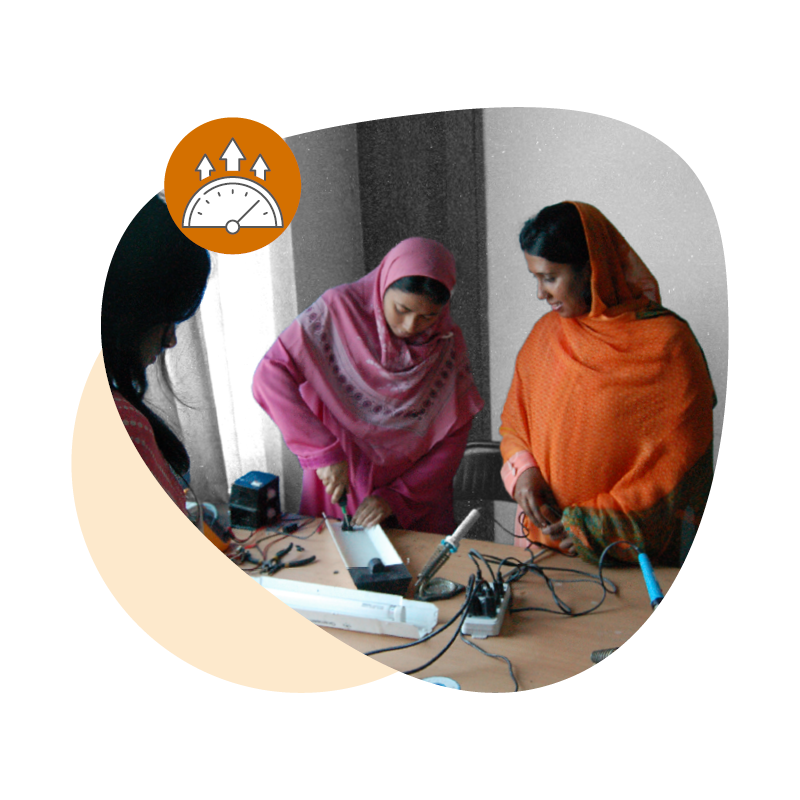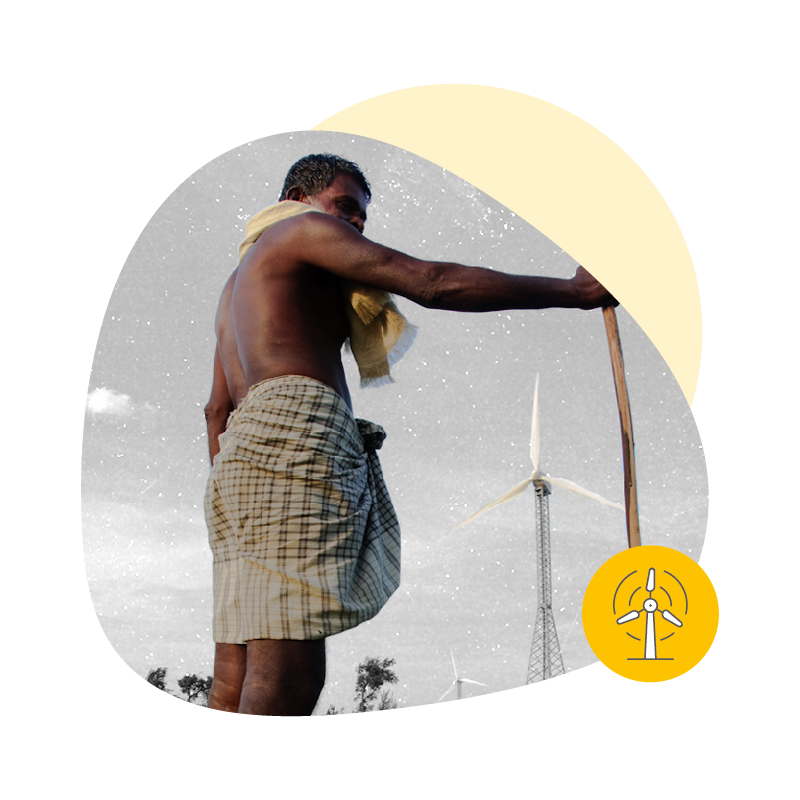FAQs about renewable energy
Renewable energy sources like wind, solar, hydropower and geothermal unlock numerous benefits for people, the planet and the economy. But right now renewable energy is not competing on a level playing field with fossil fuels.


Photo: Braden Gunem
Photo: Sarah Butler-Sloss
If we want to improve resilience during emergency situations, such as extreme weather events or global conflicts, we need to invest in renewable technologies. Explore answers to some of the most popular questions about renewable energy.
How can renewables stop the climate crisis?
Renewables play a key role in both climate change mitigation and adaptation. To effectively address the climate crisis, we urgently need to transition our energy systems away from fossil fuels that emit planet warming greenhouse gases and drive sea level rise and increased extreme weather events like heat waves, floods and wildfires.
As a widely available and affordable solution that helps significantly decrease planet warming greenhouse gas emissions, renewables are well placed to slow climate change. They are a sustainable source of energy, which also provides reliable local energy sources that help strengthen community resilience and ability to adapt to climate impacts.
Do renewables have health benefits?
Transitioning to renewable energy has significant health benefits. Not only do renewables help meet sustainable development goals, but they also replace the burning of fossil fuels, which are the largest contributors to global climate change and air pollution.
Fossil fuels – coal, oil and gas – are by far the largest contributor to global climate change, accounting for over 75% of global greenhouse gas emissions and nearly 90% of all carbon dioxide emissions. But fossil fuels are not just bad for the planet, they are also bad for our health.
Fossil fuel-induced air pollution is responsible for 1.9 million deaths annually. But switching to renewable energy can reduce air pollution and prevent millions of deaths each year. For example, meeting the Paris Agreement targets could save about a million lives annually by 2050 through reductions in air pollution alone. This reinforces the need for a transition to renewable energy sources to protect and improve global health outcomes.
How do renewables reduce energy poverty?
Imagine not having light to study at night, being unable to keep your home warm during cold winters, or lacking power to refrigerate food and medicine. This is energy poverty, and it occurs when households cannot afford adequate energy services, negatively impacting their health and wellbeing.
Without reliable energy, daily tasks like cooking, working, and staying healthy become difficult, trapping families in cycles of hardship and limiting opportunities for education, economic growth and a better quality of life.
Energy poverty is often driven by high energy costs, low income and inefficient buildings or appliances. Globally, energy poverty affects around 2 billion people, with 745 million people worldwide lacking access to electricity. In regions like Sub-Saharan Africa, four out of five people do not have electricity, and by 2030, it’s expected that 660 million people will still be without access.
Renewable energy plays a crucial role in reducing energy poverty by providing sustainable and reliable electricity, especially in remote areas. It offers a way to deliver power that improves access to healthcare, education, economic development, and overall quality of life. Additionally, renewables help strengthen community resilience during emergencies like extreme weather events and conflicts, thereby improving social and economic conditions for vulnerable populations.
How do renewables empower communities and create economic independence?
Renewable energy empowers communities by enabling local community ownership, decision-making, and equitable distribution of social and economic benefits.
Community ownership of renewable energy projects means that assets are jointly owned, operated, and controlled by members of the community and project developers. This structure means community members have a say in decision-making processes, operational management, and the maintenance of renewable energy projects. This decentralisation of power production through local community distribution helps democratise energy systems, fostering local development, creating jobs, and enhancing community resilience.
For example, in Germany, a significant portion of renewable energy is owned by individuals and farmers, not just large utility companies. In Canada, Indigenous communities are increasingly owning renewable energy projects on their traditional lands, providing reliable power and boosting local economies.
Community-owned projects like the Greencraig Wind Turbine in Scotland and the Indigenous-owned solar project in Green Lake, Canada, demonstrate how renewable energy can generate financial benefits, create educational opportunities, and enhance cultural pride. By involving communities in renewable energy, these projects contribute to economic independence and sustainable growth.
How do renewables boost resilience?
Renewable energy-powered mini-grids and microgrids can provide reliable energy access even when conventional grids fail. This boosts community resilience by maintaining access to water, healthcare and other essential services in the event of disasters, wars and conflicts that can disrupt centralised energy systems.
How much will the renewable energy transition cost?
The cost of renewable energy technologies has decreased significantly in recent years. Solar photovoltaic (PV) panel prices have dropped by over 80% since 2010, and wind turbine costs have fallen by about 40%.
From 2024 to 2030, transitioning to renewable energy will require substantial investment:
- USD 1,550 billion per year for renewable power generation capacity
- USD 720 billion per year for power grids and flexibility
Once renewable energy systems are installed, they have minimal operating and maintenance costs, whereas fossil fuels often involve ongoing expenses and subsidies. Investing in renewables is crucial to expand renewable energy infrastructure and modernise power grids to support a cleaner, more sustainable energy future.
Are renewables cheaper than fossil fuels?
While the cost of production of renewable electricity can vary significantly depending on the location, in general renewable energy is cheaper than fossil fuels. In 2022, new onshore wind projects were 52% lower than the cheapest fossil fuel option, and solar PV was 28% lower.
The decreasing costs for renewable technologies combined with their minimal post-installation operating and maintenance costs means that they have become the most competitive solutions in many countries.
This is especially the case considering the increasing costs for fossil fuels due to carbon pricing, as well as their ongoing maintenance expenses and subsidies.
In 2023, fossil fuel consumption subsidies amounted to USD 600 billion, nearly matching the USD 623 billion invested in renewable energy. Currently, renewable energy and fossil fuels are not competing on a level playing field. But removing these fossil fuel subsidies would make renewables even more cost-effective and accelerate the renewable transition.
How do renewables benefit the economy?
Renewable energy is a powerhouse for job creation. As of 2022, the sector employed 13.7 million people globally, nearly doubling its workforce over the past decade. Jobs in this field span manufacturing, installation, operations, maintenance, and policy development.
Renewables also provide energy access in places that are not covered by the traditional grid, opening up the possibility to set up new businesses. In 2021, 41 million people gained access to electricity through off-grid renewable-based systems.
As we phase out fossil fuels, renewable energy is expected to create more jobs than those lost, with a fair transition supported by reskilling workers and repurposing infrastructure. According to IRENA research, staying within 1.5 degrees of global warming could lead to a 1.5% annual increase in GDP compared to the existing policies scenario.
Renewable energy sources also provide the stability necessary for economic activities to take place. Countries and communities that rely heavily on renewable energy experience fewer disruptions during crises because renewables are less dependent on large-scale infrastructure and global fuel markets, unlike fossil fuels. This helps to shield them from fluctuating energy prices and supply chain interruptions caused by geopolitical tensions.
Renewable energy in action:
stories around the world
Countries across the globe are already benefiting from renewable energy.
By fostering cleaner energy systems, we can combat the climate crisis and protect the planet for future generations.
Explore the stories of communities and nations leading the way in the renewable energy transition.